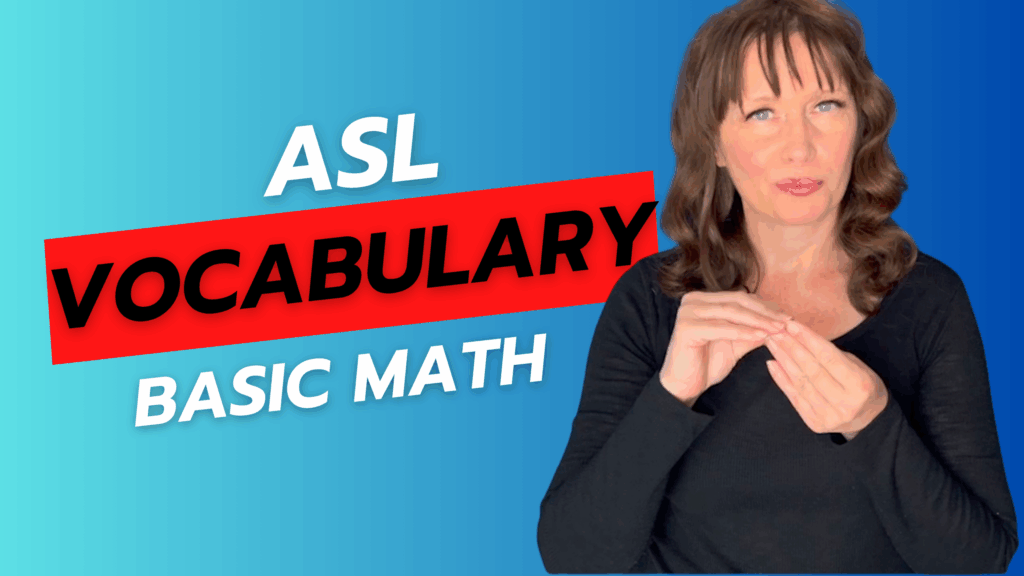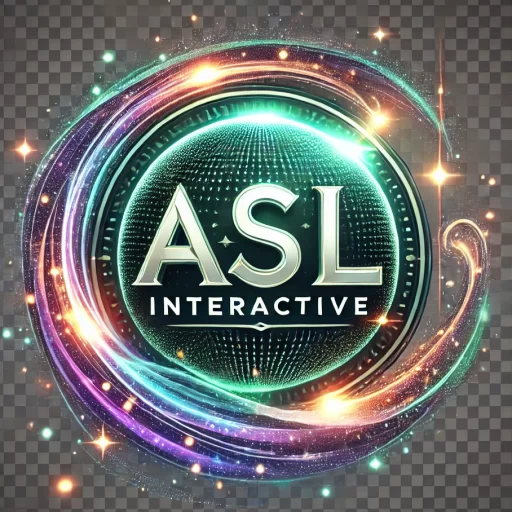Welcome to ASL Unit 1 Basic Math, where you’ll learn to sign numbers and simple arithmetic concepts in American Sign Language. Math-related signs are used frequently in everyday conversation—whether you’re talking about age, time, quantity, or solving problems.
In this ASL Unit 1 Basic Math course, you will find many resources to help you master the signs.
This ASL Unit 1 Basic Math learning experience will greatly enhance your ability to communicate effectively.
Engaging with others about topics related to ASL Unit 1 Basic Math will further reinforce your understanding.
Learning these essential signs in ASL Unit 1 Basic Math will help you in everyday situations.
Understanding basic math concepts is essential for effective communication in many aspects of life, from managing finances to engaging in social conversations. In this unit, we will also delve into examples where these math signs are applicable in real-life scenarios, enhancing your comprehension and practical application.
As you continue in ASL Unit 1 Basic Math, remember that practice makes perfect.
Having a solid grasp of numbers is not only important for daily activities but also crucial for educational settings. For instance, understanding how to sign numbers helps facilitate discussions in classrooms, making learning more inclusive for students who are deaf or hard of hearing.
By focusing on ASL Unit 1 Basic Math, you are taking a significant step in your learning journey.
The skills gained in ASL Unit 1 Basic Math will serve you well in both personal and professional contexts.
This unit focuses on numbers 0–10 and introduces essential math signs like ADD, SUBTRACT, EQUAL, and MORE.

Furthermore, mastering these basic arithmetic signs can lead to more complex math discussions later on. As you progress through your ASL studies, these foundational skills will serve as a stepping stone to more advanced topics.
🎯 Learning Goals for Basic Math
ASL Unit 1 Basic Math Overview
- Sign numbers 0–10 clearly and correctly
- Use number signs in sentences and real-life contexts
- Recognize and produce common math operation signs
- Combine number signs with classifiers and directional movements
- Express quantities, comparisons, and simple calculations
🔢 Core Vocabulary: Numbers 0–10
- ZERO
- ONE
- TWO
- THREE
- FOUR
- FIVE
- SIX
- SEVEN
- EIGHT
- NINE
- TEN
Math Concept Signs
- ADD / PLUS
- SUBTRACT / MINUS
- EQUAL / SAME-AS
- MORE
- LESS / FEWER
- TOTAL / HOW-MANY
🧠 Grammar & Number Tips
- Numbers 1–5 face inward (palm toward self) in most contexts
- Numbers 6–9 use distinct finger/thumb combinations
- Pair numbers with objects: “THREE BOOKS,” “FIVE STUDENTS”
- Use facial expressions to show comparisons (e.g., more vs. fewer)
- You can sign calculations: “TWO ADD THREE EQUAL FIVE”
✋ Cultural Notes
In Deaf culture:
Participating in activities related to ASL Unit 1 Basic Math will reinforce your skills.
- Numbers are often signed quickly—fluency comes with practice
- Eye gaze helps emphasize amounts or comparisons
- Storytelling with numbers (ages, time, money) is common and important
- Fingerspelling can be used for clarification, especially with new learners
Math signs build language confidence because they appear in many topics: shopping, telling time, measuring, and more.
Utilizing the vocabulary from ASL Unit 1 Basic Math will enhance your conversations.
🔁 Practice Activities
Counting Practice
- Sign numbers 1–10 forward and backward
- Pair numbers with nouns: “TWO CHAIRS,” “SEVEN STUDENTS”
In addition to the signs, remember that context matters. For example, when discussing time, you might use specific signs related to numbers in conjunction with time indicators to convey precise meanings. Practicing these combinations will enhance your fluency in ASL and make communication smoother.
Equation Practice
- Record yourself signing:
- “TWO ADD TWO EQUAL FOUR”
- “FIVE SUBTRACT ONE EQUAL FOUR”
Quantity Comparison Game
- Sign: “WHICH MORE?” and compare: “FOUR COOKIES vs. TWO COOKIES”
- Use MORE / LESS to respond
📖 Common Questions
Q: Do I need to mouth the numbers or math words?
A: No. Use clear handshapes and NMS (facial expressions) to show meaning.
Q: Can I use fingers for counting without signing numbers?
A: Not in ASL—numbers must be signed, not just held up like in spoken English.
Q: Are these signs used in school or daily life?
A: Yes! You’ll see math signs in schedules, prices, time, quantity, and storytelling.
As you continue your studies, remember that practice leads to fluency. Utilize the resources available, engage in conversations, and immerse yourself in the Deaf culture to truly make the most of your learning experience.
With the foundation laid in this unit, you’re well-prepared to advance to the next topic in your ASL studies. Remember to keep practicing and integrating what you’ve learned into your daily life.
Up next: [ASL Unit 1 – Classroom Actions] 🪑✋📖
Educational resources: Find related learning materials in our course bank!
Want more? Check out some of our popular learning activities on the homepage!
Need to look up a sign? Use our highly rated dictionary: https://aslinteractive.com/best-asl-dictionary/
Follow us on tiktok: https://www.tiktok.com/@aslinteractive. More social media links at the bottom of this page!
Want more? Check out some of our popular learning activities!
ASL Interactive Resources
ASLInteractive YouTube Channel
Follow us on tiktok: @aslinteractive.com
Follow us on Instagram: aslinteractive
Facebook page: aslinteractive
Facebook group: aslinteractive
In conclusion, the journey of learning ASL is a rewarding endeavor that fosters communication, understanding, and connection with others. Embrace the challenges, celebrate your progress, and remain committed to continuous improvement.
Additionally, you can create flashcards for each number and math concept sign to reinforce your memory and recognition skills. This technique will help you recall the signs more easily during conversations.
While practicing counting, try to incorporate real-life objects. For example, instead of just signing numbers, you could gather a few items and physically count them using ASL, reinforcing the connection between the signs and their numerical meanings.
Twitter: @ASL_interactive
*Some information on this page is AI-generated. AI can make mistakes. Please check the information.
Table of Contents
Additionally, it can be helpful to partner with someone else to practice signing equations aloud. This interactive approach not only improves your signing speed but also your ability to recall and use math signs effectively in conversations.

In every lesson of ASL Unit 1 Basic Math, you will find valuable insights.
One effective way to practice is by incorporating these signs into everyday conversations. For instance, when discussing your age or the age of friends, use the relevant number signs in context to reinforce your learning.
Moreover, consider the importance of practice in mastering these signs. Engaging with fellow learners, using online resources, or watching instructional videos can all contribute greatly to your proficiency.
As you practice these signs, pay attention to your facial expressions. In ASL, non-manual signals (NMS) play a significant role in conveying emotions and clarity, particularly when discussing quantities and comparisons.
Ultimately, your goal is to become comfortable with these math signs so that you can use them naturally in conversations, whether you’re with friends, family, or in educational settings.
Consider organizing a small group practice session where participants can take turns asking and answering math-related questions using ASL. This collaborative learning experience can provide valuable feedback and help everyone improve their skills.
Lastly, engaging with the Deaf community through events or workshops can also provide practical experiences that reinforce your learning. This immersion will not only boost your confidence but also deepen your understanding of the cultural context of ASL.
To wrap up, remember that learning ASL is a journey. With regular practice and a focus on contextual usage, you can become proficient in signing numbers and basic math concepts, paving the way for effective communication in various scenarios.
Advanced topics in ASL Unit 1 Basic Math will build upon what you learn here.
Every practice session in ASL Unit 1 Basic Math will help solidify your understanding.
As you conclude ASL Unit 1 Basic Math, reflect on your progress and next steps.
The learning strategies in ASL Unit 1 Basic Math will aid your retention of information.
Incorporate signs from ASL Unit 1 Basic Math into your daily conversations for practice.
As you engage with others, use signs from ASL Unit 1 Basic Math for clarity.
Apply what you’ve learned in ASL Unit 1 Basic Math to real-life scenarios.
